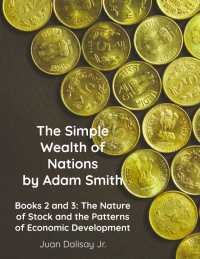ARITHMETIC AND LOGARITHMS
4 minutes • 828 words
Arithmetic is divided into 2 parts.
- The first is based on the decimal system and on the manner of arranging numeral characters to express numbers.
This first part comprises the 4 common operations of addition, subtraction, multiplication, and division.
These operations which would be different if a different system were adopted, but, which it would not be difficult to transform from one system to another, if a change of systems were desirable.
- The second is based on the consideration of quantities and on the general properties of numbers.
This is independent of the system of numeration.
The theory of fractions, the theory of powers and of roots, the theory of arithmetical and geometrical progressions, and, lastly, the theory of logarithms, fall under this head.
It may be regarded as universal arithmetic, having an inti- mate affinity to algebra. For, if instead of particularising the quantities considered, if instead of assigning them numerically, we treat them in quite a general way, designating them by let- ters, we have algebra. You know what a fraction is. The notion of a fraction is slightly more composite than that of whole numbers. In whole numbers we consider simply a quantity repeated. To reach the notion of a fraction it is necessary to consider the quantity di- vided into a certain number of parts. Fractions represent in
general ratios, and serve to express one quantity by means of an- other. In general, nothing measurable can be measured except by fractions expressing the result of the measurement, unless the measure be contained an exact number of times in the thing to be measured. You also know how a fraction can be reduced to its lowest terms. When the numerator and the denominator are both di- visible by the same number, their greatest common divisor can be found by a very ingenious method which we owe to Euclid. This method is exceedingly simple and lucid, but it may be rendered even more palpable to the eye by the following con- sideration. Suppose, for example, that you have a given length, and that you wish to measure it. The unit of measure is given, and you wish to know how many times it is contained in the length. You first lay off your measure as many times as you can on the given length, and that gives you a certain whole number of measures. If there is no remainder your operation is finished. But if there be a remainder, that remainder is still to be eval- uated. If the measure is divided into equal parts, for example, into ten, twelve, or more equal parts, the natural procedure is to use one of these parts as a new measure and to see how many times it is contained in the remainder. You will then have for the value of your remainder, a fraction of which the numerator is the number of parts contained in the remainder and the denom- inator the total number of parts into which the given measure is divided. I will suppose, now, that your measure is not so divided but that you still wish to determine the ratio of the proposed length to the length which you have adopted as your measure. The following is the procedure which most naturally suggests itself.
If you have a remainder, since that is less than the measure, naturally you will seek to find how many times your remainder is contained in this measure. Let us say two times, and that a remainder is still left. Lay this remainder on the preceding re- mainder. Since it is necessarily smaller, it will still be contained a certain number of times in the preceding remainder, say three times, and there will be another remainder or there will not; and so on. In these different remainders you will have what is called a continued fraction. For example, you have found that the mea- sure is contained three times in the proposed length. You have, to start with, the number three. Then you have found that your first remainder is contained twice in your measure. You will have the fraction one divided by two. But this last denominator is not complete, for it was supposed there was still a remainder. That remainder will give another and similar fraction, which is to be added to the last denominator, and which by our suppo- sition is one divided by three. And so with the rest. You will then have the fraction 1 3+ 2+ 1 . 3 + .. as the expression of your ratio between the proposed length and the adopted measure. Fractions of this form are called continued fractions, and can be reduced to ordinary fractions by the common rules. Thus, if we stop at the first fraction, i.e., if we consider only the first remainder and neglect the second, we shall have 3 + 12 , which is equal to 72 . Considering only the first and the second remainders,







